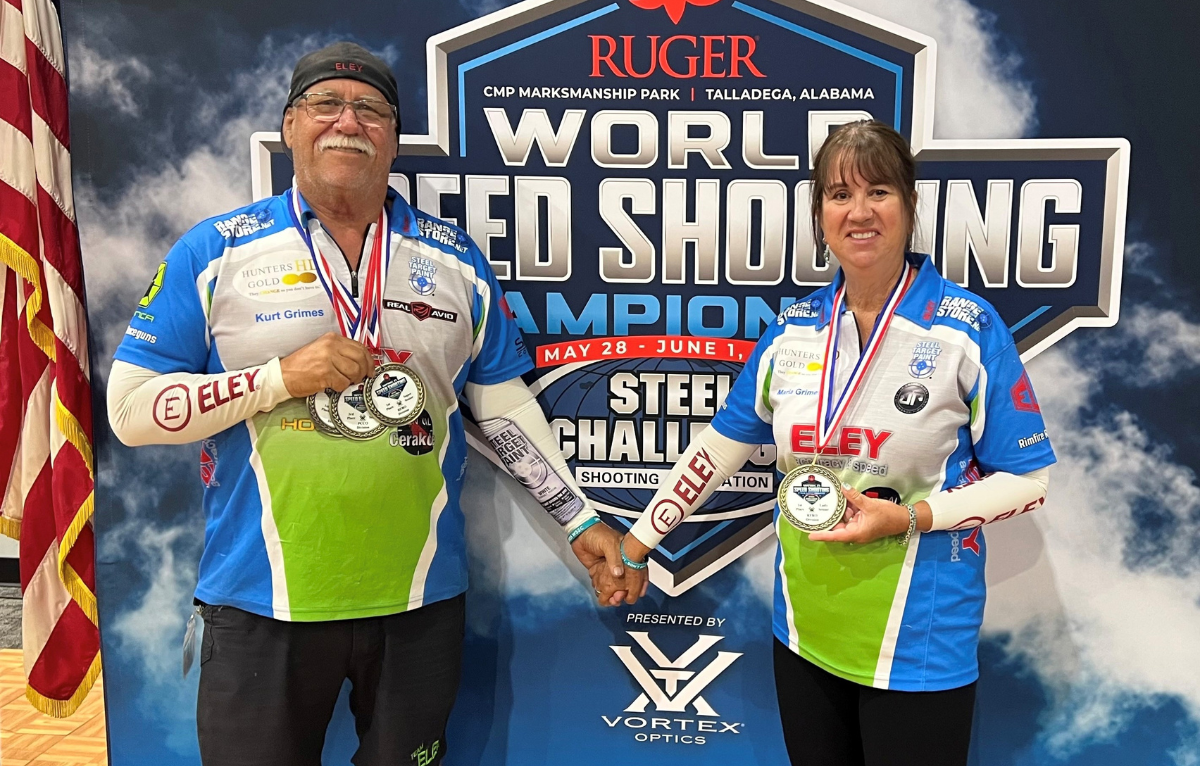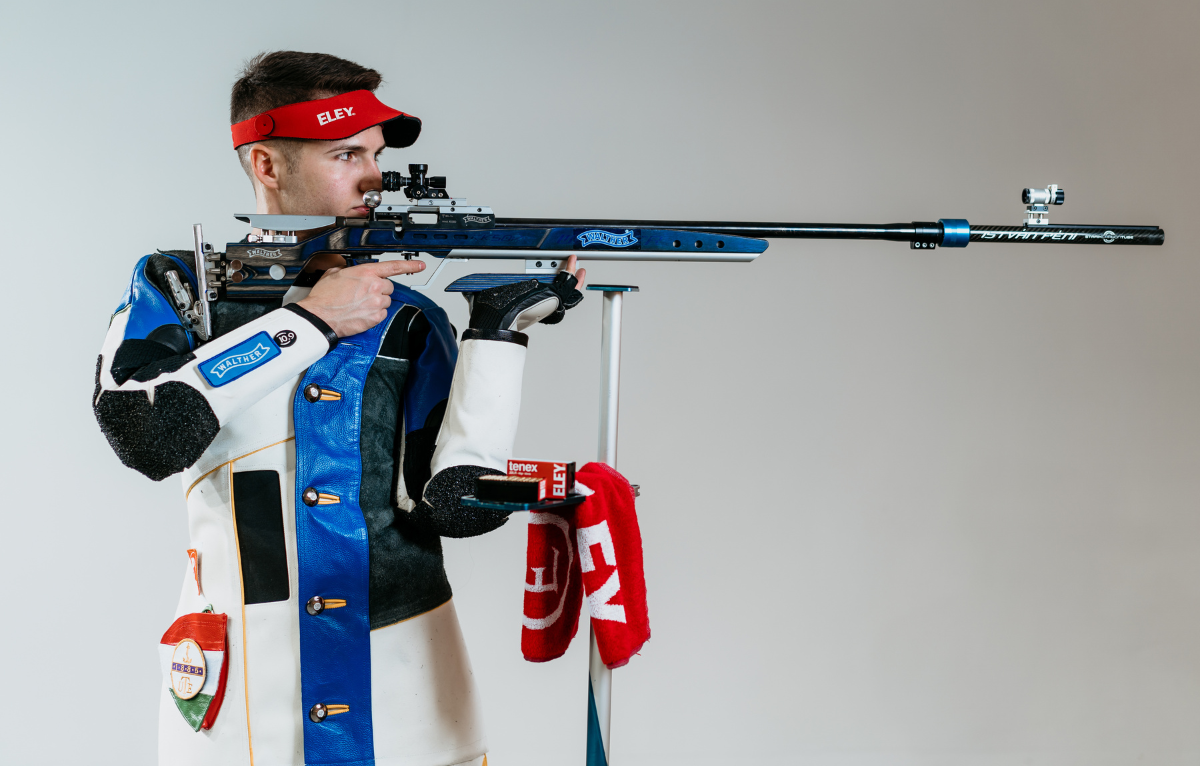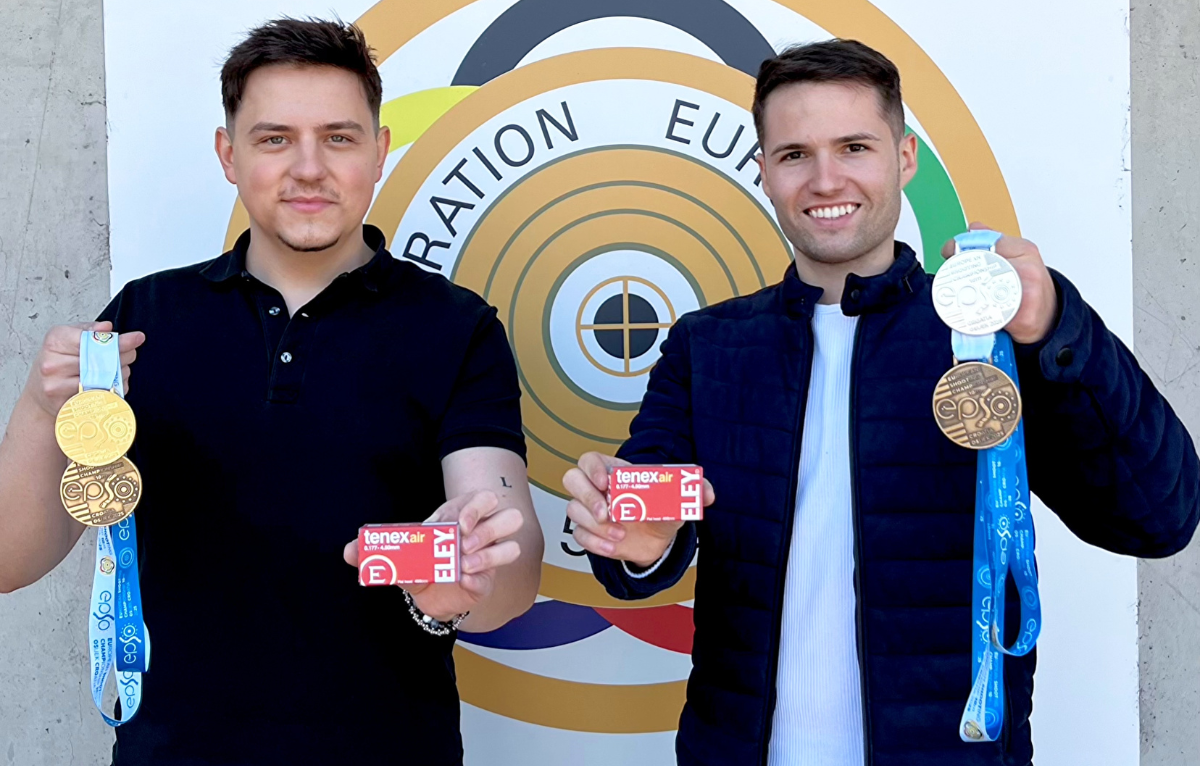Martyn Buttery, ELEY test range manager and GB Talent Squad coach, is back with his latest hints and tips. This time, exploring how you can improve your standing position for rifle shooting to gain greater scores.
As Martyn notes, the standing position is arguably the most difficult. This is because you’re relying on only a small area of your body to maintain and support your position. It involves using the skeletal structure to provide support and control for the rifle as well as balance for stability. These are skills that need learning and developing to achieve accuracy.
Stability is needed to keep the body and rifle moving as little as possible when aiming and triggering. What’s more, practicing your stance will build muscle memory and make it easier for you to get into position quickly and comfortably.
Quickly because the faster you settle into a position and pull the trigger, the better your results tend to be. If you spend too much time concentrating on your point of aim, your body will start tensing and could come off target.
Secondly, comfortably as you will be stood for a while dependent on the number of shots required for the competition which can be mentally and physically taxing.
So lets get down to the fundamentals of what makes a good standing position. Broadly speaking, the target rifle stance requires you to stand ‘side-on’ to the target with the left shoulder leading. The left hip is pushed forward and left elbow tucked in.
Shooting Sports USA lists the most important features as:
- The back bend and twist.
- Keeping both legs straight.
- Ensure weight is balanced on both legs.
- Keeping the left (for left-handed, right) relaxed on the side as it supports the rifle.
- Having a fairly straight head position.
To break this down, Martyn looks at the lower body, legs, feet and hips, and then upper body. First things first, the feet. The feet provide the maximum support for the standing position so should be approximately shoulder width apart. The left foot should be parallel with the firing line, and right slightly pointed outward to aid balance. Weight should be evenly distributed through both legs/feet.
The position of the feet can also correct your rifle position on the target. Generally speaking, the left foot remains fixed, but the right can be used to readjust your aim on the target. For example, if you widen your stance, the barrel will move up.
Legs should be straight with minimal tension in the muscles. For the pelvis, it should be in line with your firearm with hips facing forward. Any bending should only occur above the waist. The back should be bent rearward and body pointed to the right in a twist position as mentioned above.
For the upper body, the left arm should be directly under the rifle with the elbow leaning against the left hip. This provides stability. Next, place the rifle first on the left hand to ensure the wrist is straight and relax your hand.
The right shoulder should be relaxed with the arm raised about 30/40˚. The right hand firmly holds the grip of the rifle ensuring it is straight or slightly leaning to the left. Lastly, the head should be straight without bending so that it can lean on the cheek-piece without any effort.
Martyn notes that core exercises can help improve endurance during standing position. Read more, for example exercises you can do at home to boost your core strength.
All positions are easy to practice at home. Try in front of a mirror to assess if you’re doing it right. If you can, get a fellow shooter to look at your form and provide feedback.





